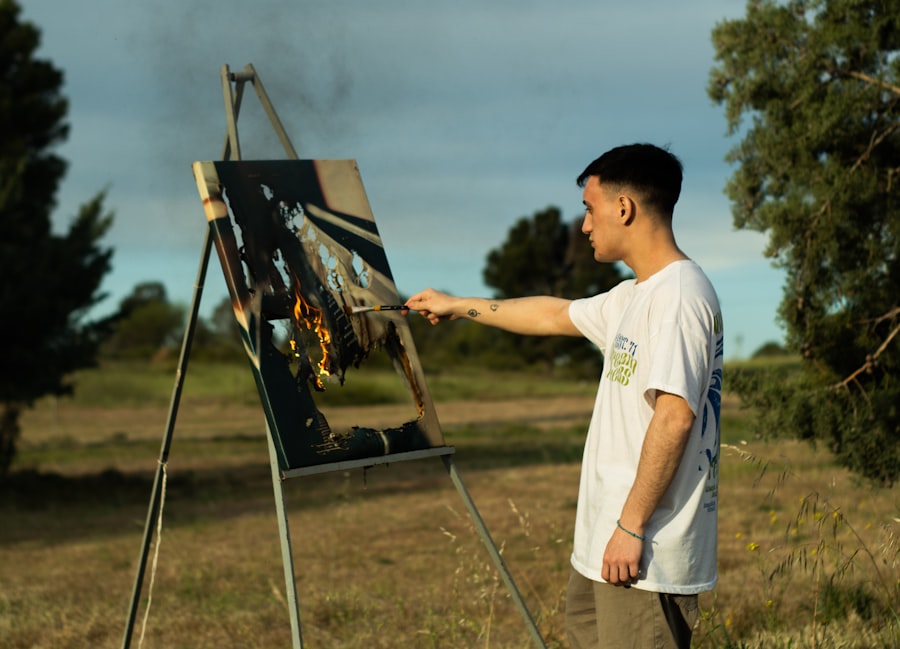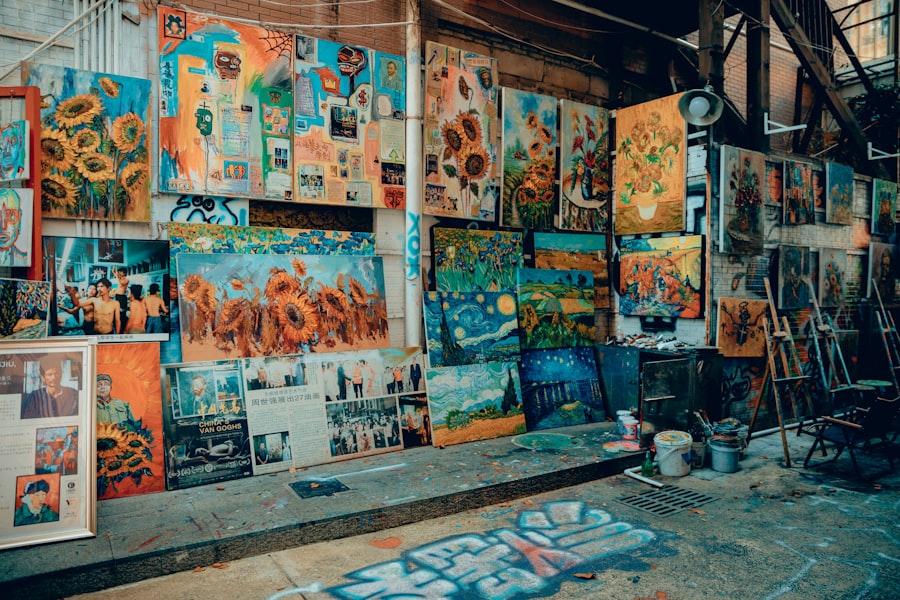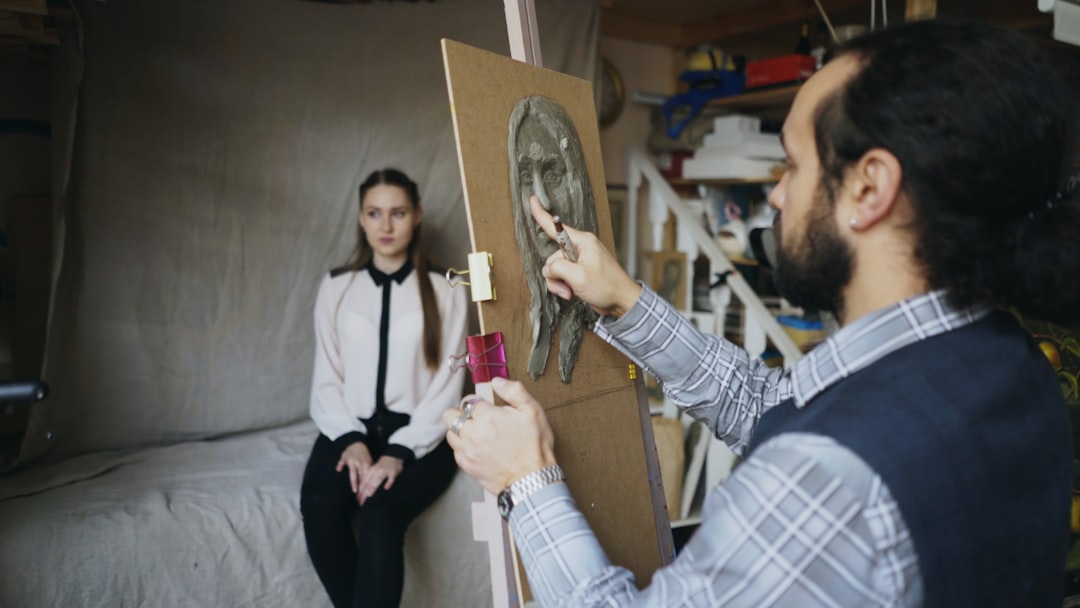As you navigate the evolving landscape of the art world, you may find yourself pondering the intersection of artificial intelligence (AI) and artistic professions. The rapid advancement of AI technologies has sparked a revolution in various sectors, and the realm of art is no exception. From generating visual art to composing music, AI is increasingly becoming a collaborator rather than just a tool.
This shift raises important questions about the future of art jobs and the role of human creativity in an age dominated by algorithms and machine learning. In this context, it is essential to explore how AI is reshaping traditional artistic fields, influencing creative processes, and altering the job market for artists. As you delve deeper into this topic, you will discover both the opportunities and challenges that AI presents to artists.
Understanding these dynamics will not only help you navigate your own artistic journey but also provide insight into the broader implications for the art community as a whole.
Key Takeaways
- AI is revolutionizing traditional artistic fields by providing new tools and techniques for artists to explore.
- The creative process is being transformed by AI, allowing artists to experiment with new forms of expression and push the boundaries of their work.
- AI is playing a significant role in the development of artistic tools and software, providing artists with innovative ways to create and collaborate.
- The debate on AI’s ability to replace human creativity is ongoing, with some arguing that AI can enhance human creativity while others fear it may diminish the value of human artistry.
- AI’s influence on artistic industries and the job market is creating both opportunities and challenges for artists, requiring them to adapt to new technologies and ways of working.
- The future of art jobs in the age of AI is uncertain, but there are opportunities for artists to thrive by embracing AI and using it to their advantage.
- Artists face both opportunities and challenges in a world with AI, requiring them to navigate ethical considerations and find ways to stand out in a competitive landscape.
- Ethical considerations in the use of AI in art are important, as artists must consider the implications of using AI and ensure that their work is original and ethically sound.
- Strategies for artists to adapt and thrive in the AI era include embracing AI as a tool for creativity, learning new skills, and finding ways to differentiate their work from AI-generated art.
- Finding a balance between AI and human creativity in art is crucial for the future of artistic expression, as AI continues to influence and shape the artistic landscape.
The Impact of AI on Traditional Artistic Fields
The influence of AI on traditional artistic fields is profound and multifaceted. In disciplines such as painting, sculpture, and music, AI technologies are being employed to create works that challenge conventional notions of authorship and creativity. For instance, AI algorithms can analyze vast datasets of existing artworks to generate new pieces that mimic the styles of renowned artists.
This capability raises questions about originality and the value of human touch in art. As you observe these developments, you may wonder how they affect your own practice and the work of your peers. Moreover, AI’s impact extends beyond mere creation; it also influences how art is consumed and appreciated.
With platforms that utilize AI to curate personalized art experiences, audiences are engaging with art in ways that were previously unimaginable.
How AI is Changing the Creative Process

As you explore the creative process, you’ll notice that AI is not merely a tool for generating art; it is also transforming how artists conceptualize and execute their ideas. By leveraging machine learning algorithms, you can access new forms of inspiration and experimentation that were once beyond reach. For example, AI can assist in brainstorming ideas, suggesting color palettes, or even generating preliminary sketches based on your input.
This collaborative dynamic can lead to unexpected outcomes that enrich your artistic practice. However, this shift also prompts a reevaluation of what it means to be an artist. As you incorporate AI into your workflow, you may find yourself grappling with questions about authorship and authenticity.
Is the artwork still yours if it was significantly influenced by an algorithm? This introspection can lead to a deeper understanding of your creative identity and the role technology plays in shaping it. Embracing AI as a partner in your creative journey can open up new avenues for exploration while challenging you to define your artistic voice in a rapidly changing environment.
The Role of AI in Artistic Tools and Software
| Artistic Tool/Software | AI Integration | Benefits |
|---|---|---|
| Adobe Photoshop | AI-powered features for image editing and enhancement | Improved photo editing, content-aware fill, and object selection |
| Autodesk Maya | AI-driven animation and modeling tools | Enhanced character rigging, motion capture, and 3D modeling |
| Corel Painter | AI-assisted brush and texture generation | Efficient creation of realistic digital paintings and textures |
| Artbreeder | AI-generated art and image manipulation | Endless creative possibilities and inspiration for artists |
The proliferation of AI-driven tools and software has revolutionized the way artists create and interact with their work. From graphic design applications that utilize AI for image enhancement to music production software that can compose original scores, these innovations are making artistic creation more accessible than ever before. As you experiment with these tools, you may find that they not only streamline your workflow but also inspire new creative directions.
Yet, while these advancements offer exciting possibilities, they also raise concerns about over-reliance on technology. As an artist, it’s crucial to strike a balance between utilizing AI tools and maintaining your unique creative instincts. You might consider how these tools can complement your skills rather than replace them.
By integrating AI thoughtfully into your practice, you can harness its potential while ensuring that your artistic vision remains at the forefront.
The Debate on AI’s Ability to Replace Human Creativity
The question of whether AI can truly replace human creativity is a contentious one that has sparked extensive debate among artists, critics, and technologists alike. On one hand, proponents argue that AI-generated art can achieve levels of complexity and innovation that rival human creations. They point to instances where AI has produced works that have been exhibited in galleries or even sold at auction for significant sums.
As you engage with this discourse, you may find yourself considering the implications for your own work and the value placed on human creativity. Conversely, many argue that while AI can mimic styles and generate content, it lacks the emotional depth and lived experiences that inform human artistry. The nuances of human expression—shaped by culture, history, and personal narrative—are difficult for machines to replicate fully.
As you reflect on this debate, you might contemplate what makes your work uniquely yours and how those qualities can be preserved in an age where technology plays an increasingly prominent role.
AI’s Influence on Artistic Industries and Job Market

The rise of AI is reshaping not only individual artistic practices but also entire industries and job markets related to art. As automation becomes more prevalent in fields such as graphic design, advertising, and even film production, traditional roles may evolve or become obsolete. For instance, tasks that once required human designers may now be performed by AI algorithms capable of generating designs based on specific parameters.
This shift could lead to a reduction in demand for certain positions while simultaneously creating new opportunities in areas like AI programming and data analysis. As you consider your career trajectory in this changing landscape, it’s essential to stay informed about industry trends and emerging roles that leverage both artistic skills and technological proficiency. By embracing lifelong learning and adaptability, you can position yourself to thrive in a job market increasingly influenced by AI technologies.
The Future of Art Jobs in the Age of AI
Looking ahead, the future of art jobs in an age dominated by AI presents both challenges and opportunities. While some traditional roles may diminish, new avenues for employment are likely to emerge as artists find innovative ways to integrate technology into their practices. For instance, positions focused on curating digital exhibitions or developing interactive art experiences may become more prevalent as audiences seek immersive encounters with art.
Moreover, as industries continue to evolve, there will be a growing demand for artists who can navigate the intersection of creativity and technology. Your ability to adapt to these changes will be crucial in ensuring your relevance in the job market. By cultivating skills that complement AI technologies—such as critical thinking, emotional intelligence, and storytelling—you can carve out a niche for yourself in this dynamic environment.
Opportunities and Challenges for Artists in a World with AI
In a world increasingly shaped by AI, artists face a unique set of opportunities and challenges. On one hand, the accessibility of AI tools can democratize artistic creation, allowing individuals from diverse backgrounds to express themselves creatively without traditional barriers. This shift could lead to a richer tapestry of voices within the art community as more people engage with technology to share their stories.
On the other hand, the proliferation of AI-generated content raises concerns about saturation in the market and the potential devaluation of human-made art. As an artist navigating this landscape, you may need to find ways to differentiate your work from algorithmically generated pieces. This could involve emphasizing the personal narratives behind your creations or exploring themes that resonate deeply with audiences on an emotional level.
Ethical Considerations in the Use of AI in Art
As you engage with AI technologies in your artistic practice, ethical considerations come to the forefront. Questions surrounding copyright ownership, data privacy, and the potential for bias in algorithms are critical issues that demand attention. For instance, if an AI generates artwork based on existing pieces without proper attribution or consent from original creators, it raises ethical dilemmas regarding intellectual property rights.
Furthermore, as an artist using AI tools, it’s essential to reflect on how these technologies may perpetuate existing biases or stereotypes present in training data. By being mindful of these ethical implications, you can strive to create work that not only pushes boundaries but also respects the integrity of artistic expression.
Strategies for Artists to Adapt and Thrive in the AI Era
To thrive in an era where AI plays an increasingly prominent role in art creation and consumption, developing effective strategies is essential. First and foremost, embracing continuous learning will empower you to stay abreast of technological advancements relevant to your field. Consider taking courses or attending workshops focused on AI applications in art to enhance your skill set.
Additionally, fostering collaborations with technologists or other artists who specialize in digital media can lead to innovative projects that push creative boundaries. By building a network of like-minded individuals who share your passion for exploring the intersection of art and technology, you can cultivate a supportive community that encourages experimentation and growth.
Finding a Balance between AI and Human Creativity in Art
As you reflect on the evolving relationship between AI and human creativity in art, it becomes clear that finding a balance is crucial for both artists and audiences alike. While AI offers exciting possibilities for innovation and collaboration, it is essential not to lose sight of the unique qualities that define human artistry—empathy, emotion, and personal experience. By embracing technology as a partner rather than a replacement, you can navigate this new landscape with confidence and creativity.
Ultimately, the future of art lies not in choosing between human expression and artificial intelligence but rather in harmonizing these elements to create a richer artistic experience for all. As you embark on this journey, remember that your voice as an artist remains invaluable in shaping the narrative of art in the age of AI.
The rise of artificial intelligence in the creative industry has sparked a heated debate about its impact on traditional art jobs. As AI technology continues to evolve, many artists are concerned about the potential for machines to replace human creativity. An interesting perspective on this issue can be found in an article on How Wealth Grows, which explores the broader implications of AI on various job sectors, including the arts. For more insights, you can read the full article by visiting How Wealth Grows.
FAQs
What is AI?
AI, or artificial intelligence, refers to the simulation of human intelligence in machines that are programmed to think and act like humans. This includes tasks such as learning, problem-solving, and decision-making.
What are art jobs?
Art jobs encompass a wide range of creative and artistic professions, including graphic design, illustration, animation, and other visual arts, as well as music composition, writing, and other creative endeavors.
Is AI taking art jobs?
AI has the potential to automate certain tasks within the art industry, such as repetitive design work or data analysis. However, it is also creating new opportunities for artists to collaborate with AI tools and create innovative works.
How is AI impacting the art industry?
AI is impacting the art industry by streamlining certain processes, enabling artists to experiment with new tools and techniques, and creating new opportunities for collaboration and creativity.
What are some examples of AI in the art industry?
Examples of AI in the art industry include AI-generated art, machine learning algorithms used for data analysis and pattern recognition, and AI-powered tools for creative expression and design.
What are the potential benefits of AI in the art industry?
The potential benefits of AI in the art industry include increased efficiency, new creative possibilities, and the ability to reach new audiences through digital platforms and AI-powered experiences.
What are the potential challenges of AI in the art industry?
Challenges of AI in the art industry may include concerns about job displacement, ethical considerations around AI-generated art, and the need for artists to adapt to new technologies and tools.
